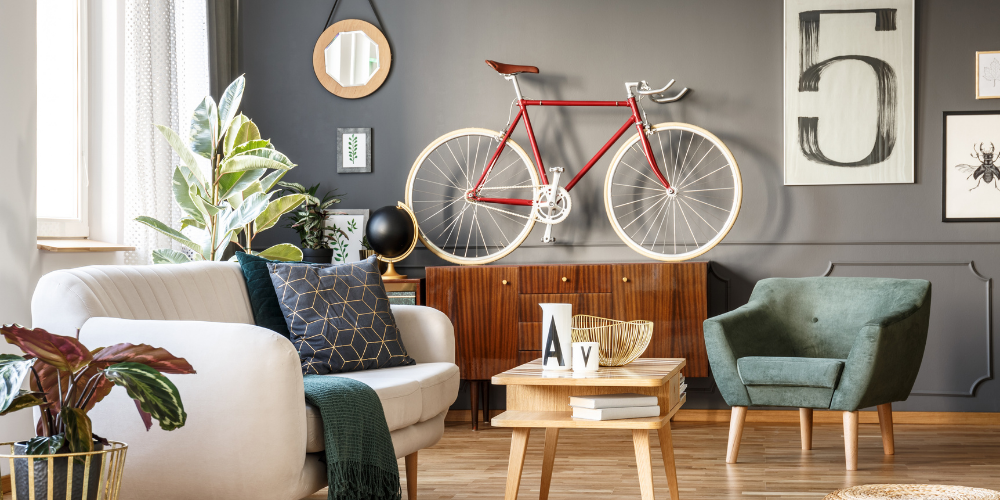Real Estate is widely regarded as the most valuable asset for a household. Due to it being a hedge against inflation, it is considered a relatively safe investment, as opposed to the more volatile Stock Market. However, it’s worth noting that a property’s value is also measured by the comfort it provides to its residents. After all, the word “Home” is strongly associated with a sense of love, comfort and safety. Here are 5 key considerations you should consider before purchasing a new safe haven.
1. Tenure
An age-old dilemma that home-seekers have faced lies in choosing between a Freehold or a Leasehold property. For us in Singapore, this decision has been made slightly easier as the majority of our land is state-owned, resulting in leasehold property dominating the market. Nonetheless, it is still important to understand the differences and their implications.

Freehold
Owning a freehold property means that it will belong to you and your heirs for eternity. However, there are 2 sub-categories in the form of a Fee Simple and an Estate in Perpetuity.
While both remain under the owner’s name forever, the difference lies in the latter having to observe several conditions. Such conditions include allowing access to collectors and officers and adhering to land use regulations. Any breach of such conditions will result in the State seizing the property. It is thus advisable to check the State Lands Act for these conditions before making any purchase.
Leasehold
A residential leasehold property is typically let out for 99 years. Upon expiry, ownership will revert to the Government. This means that your property cannot be inherited over multiple generations.
Finding out the remaining years on the lease is also crucial. Leasehold properties decrease in value as their leases run down, and it is thus not advisable to purchase one that has a few years remaining given its low resale value.
If the remaining lease of your resale flat cannot cover up till when you are 80-year-old. You will not be allowed to use your CPF for the payment of the flat. The same goes for the HDB housing loan; loans will not be offered to this same group of buyers.
In the event your lease is running down, there’s an option to top it up to 99 years. This will incur a fee called a Premium (to be determined by a Valuer).
Hence, a property’s tenure can have varying implications on its homeowners and is, therefore, a crucial element of consideration before any purchase.
2. Location
“Location Location Location” is a frequently used quote. The location is the key determinant of a property’s value. For instance, a house in Katong with plenty of amenities in the neighbourhood is likely to be more expensive as compared to one in Boon Lay with minimal amenities. Such disparities in value are associated with the level of comfort, use, and enjoyment it can provide its residents, all of which are largely dependent on location. Examples of amenities are malls, transport systems like MRTs/buses, and schools.

However, the desire for such amenities varies between individuals. Just consider this scenario- Jack is a career-driven businessman and has yet to start a family. His key concern is finding a property that gives him ease of transport to his workplace. So how practical is a property with schools in the vicinity? Quite frankly, it isn’t practical as Jack has no use for such amenities.
Now compare it to a family of four. With Singapore’s Primary School balloting system in favour of those living closer to the school, having their property nearby will be of great benefit to them. They will therefore place greater value on such an amenity and purchase the property.
It’s thus important to identify if the location has the amenities you are looking for and make an informed decision from there.
3. Space
When purchasing a property, one has a basic idea of how many rooms are required to house the entire family. Unfortunately, spatial consideration goes beyond that. Factors like Gross Floor Area (GFA) and Plot Ratio (PR) are fundamental in your selection process.

If these terms are foreign to you, now’s a good time to gain some insight.
Gross Floor Area (GFA) is the product of Land Area and Plot Ratio. It includes spaces that cannot be occupied(sub-areas) such as columns, stairways, and even the thickness of interior walls. Formula to remember here is GFA= “Land Area” multiplied by “PR”
Net Floor Area (NFA) refers to the useable space in the building. It can be derived by deducting sub-areas from the GFA.
Plot Ratio (PR) determines the maximum building height. In general, PR for residential property ranges from 1.4 to 2.8, with the former typically housing 5 storeys, and the latter surpassing 36 storeys.
Given that everyone has different space requirements, there isn’t a general rule of thumb to follow. However, it is wise to get a property that utilizes its maximum permissible GFA.
Increasing the GFA of a property after purchase will incur additional costs in the form of a Development Charge (Freehold) or a Differential Premium (Leasehold). Hence, it is best to do your research on a property’s space before making a purchase.
4. Orientation
Your property’s orientation will affect your level of comfort. Have you wondered why units with a sea view are more expensive? And why units facing the main road are usually sold on the cheap? It is because the former provides an aesthetically pleasing view and sea breeze which is valued by residents for its calming effects, while the latter is undesirable due to the noise and air pollution.

Other considerations include the morning sun, facing the walkway/corridor, and proximity to the lift. Careful selection of your home’s orientation will go a long way in ensuring a comfortable and enjoyable stay.
5. Rights and Obligations
Finding out the rights and obligations stemming from ownership of a property is also important. For instance, the property might be subjected to Covenants or Easements.
Here’s a brief explanation of what Easements entail.
An easement involves 2 properties- a Dominant Tenement (DT) and a Servient Tenement (ST). Under a positive easement, the owner of the DT obtains a right to do something in the ST for his benefit.
For example, a pathway easement allows him to walk through the ST to access the main road. A negative easement restricts the owner of the ST from taking certain actions on his land if such actions will affect the DT. This includes a right to light, thus barring the ST owner from building up a fence that might block sunlight from reaching the DT.

Hence, whether you enjoy certain rights or are bound by obligations depends on whether the property is a DT or ST respectively. Beyond simply determining the rights and obligations, it would be advisable to check the conditions for their extinguishment.
It is thus crucial to find out if the preceding owners had any such arrangements before purchasing the property, for some of these rights and obligations run with the land.
Conclusion
On the whole, purchasing property is a big deal, as it is the most expensive investment for any household. To ensure that you get the best returns and enjoy a comfortable stay, sufficient thought and consideration have to be put into it. While there might be great uncertainty with such a massive decision, one thing is certain- these 5 considerations will better equip you in your search for a new home!
Want to find the best mortgage rate in town? Check out our free comparison service to learn more!
Read more of our posts below!

